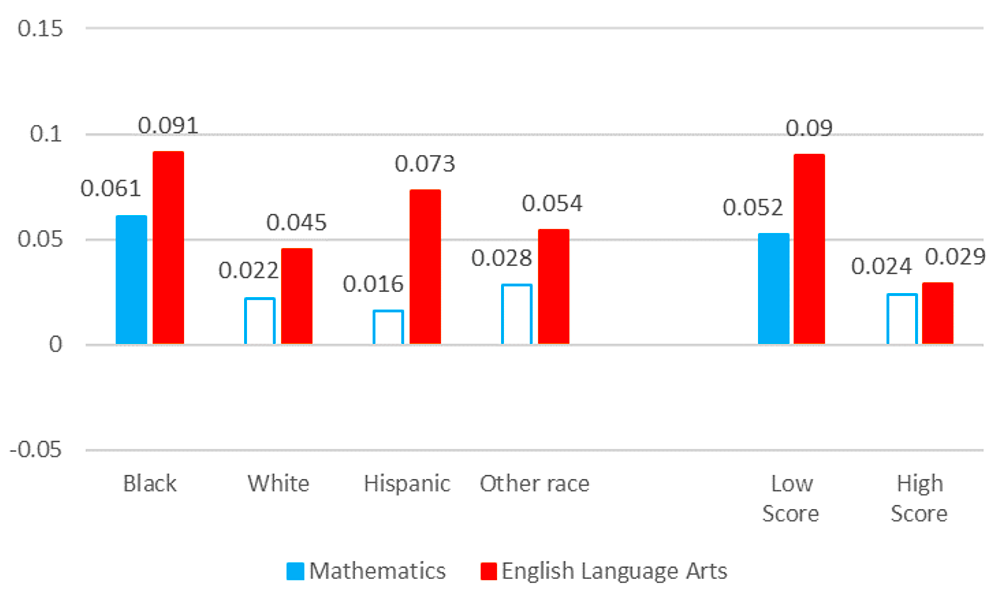For a number of years, Ohio’s charter school sector has been more of a punchline than an exemplar in national debates about charters. The criticisms, though sometimes exaggerated, were not entirely unwarranted. Low-performing charter networks grew unchecked, and the irresponsible practices of ECOT, a massive online school, became front-page news. Recognizing the quality control problems, we at Fordham have long pressed for stronger charter accountability. In 2006, we partnered with NACSA and NAPCS to issue a set of recommendations aimed at strengthening state charter law. Seeing evaluations indicating that more needed to be done and appalled by news of startup failures, we redoubled our efforts eight years later by releasing a paper with Bellwether Education Partners that urged further reforms.
With the backing of Governor John Kasich and bipartisan support in the legislature, Ohio lawmakers heeded the call for course correction and enacted landmark charter legislation in 2015. It strengthened oversight of charter authorizers, eliminated loopholes that allowed low-performing schools to escape accountability, and added more transparency around charter operators’ practices and finances. We believed the reform package would improve performance by ridding the sector of chronic poor performers and building the public confidence needed for high-performers to thrive.
Five years later, we are seeing signs of the hoped-for improvement. The accountability reforms have incentivized charter authorizers to act on behalf of students by closing dozens of low-performing schools (one being the aforementioned ECOT). On the other end of the spectrum, with stronger guardrails in place, Ohio is now boldly supporting the growth of quality charters. In a brand-new initiative, Governor Mike DeWine and Lieutenant Governor Jon Husted proposed and shepherded through the legislature a program in 2019 that now provides up to $1,750 per low-income pupil in supplemental funding for high-performing charters.
More good news arrived this week in the form of a rigorous empirical study. Mindful that the goal of these policy reforms is higher pupil achievement, we commissioned Ohio State University professor Stéphane Lavertu to gauge the effectiveness of Ohio charter schools in recent years. Dr. Lavertu’s evaluation relies on anonymous, student-level data provided by the Ohio Department of Education to study the impacts of charters from 2015–16 through 2018–19.
His analysis finds that the performance of Ohio’s charter sector has indeed improved in recent years. Combining brick-and-mortar and online schools, overall charter effects were null in English language arts (ELA) and negative in math in 2015–16. Three years later, effects in ELA moved to positive and to null in math. Put another way, in the most recent year of data, Ohio charter students outperformed demographically similar district students in ELA and held their own in math. It’s possible that these improvements would have occurred without reform, but as data from states like Texas and Arizona tell us, ensuring that low-performing schools close—one of the aims of Ohio’s charter reforms—can drive sector improvements.
The results are all the more encouraging when the focus is narrowed to general-education, brick-and-mortar charters. When online and dropout-recovery schools are omitted, the benefits of conventional charter schools—those that educate two in three Ohio charter students—emerge with much greater clarity. Consider the following findings:
- In grades 4–8 brickand-mortar charter students make significant gains on both state math and ELA exams when compared to district students of similar backgrounds. Black students make particularly strong progress. In fact, as the figure below shows, their results drive the positive overall impacts. Based on annual gains averaged across both subjects and accumulated over five years, Lavertu estimates that the average Black student who attends a brick-and-mortar charter from grades 4–8 moves from the 25th to 40th percentile in statewide achievement.
Figure 1: Annual impact on achievement by race/ethnicity and prior achievement (2016–19)

Note: The figure displays the annual impact of attending a brick-and-mortar charter school on student achievement in grades 4–8. Estimates listed above the bars are in standard deviations and are statistically significant if the bars are solid.
- Though fewer in number than elementary and middle schools—just fiftynine compared to 232 schools in the grade 4–8 analysis—Ohio’s general education charter high schools also deliver notable academic benefits. The analysis shows that students’ scores on state English end-of-course exams improve, although gains on math end-of-course and ACT exams are not statistically significant.
- In both grades 4–8 and in high school, brick-and-mortar charters boost attendance and reduce disciplinary incidents. Charter students also receive more hours of instruction, which may contribute to the achievement gains that we observe. The reduction in disciplinary incidents also suggests that brick-and-mortar charters may improve the social-emotional well-being of their students, an important outcome by itself and another likely mediator of improved achievement.
We know full well that some charters are more effective than others, as is also the case with district and private schools. Overall, however, the present study offers compelling evidence that sector performance has improved greatly in recent years, and that attending a typical brick-and-mortar charter school in Ohio benefits students whose families make this choice.
Despite the positive findings, Ohio charter schools still have a way to go before they can be mentioned alongside the nation’s finest charter sectors. What are we doing to keep the momentum going? Here are our three recommendations to state policymakers, some of which may be relevant in other states, too:
1. Maintain strong accountability for charters (as for all public schools). To ensure that the charter sector continues to make progress, the state must stay the course on its 2015 charter reforms. As this report goes to press, accountability policies applying to both district and charter schools have been put on temporary hold due to the pandemic. That’s understandable, even unavoidable. But once the health crisis passes, Ohio should reboot its standard accountability policies, including those designed to hold charters (and their authorizers) to account for results.
2. Remove geographic restrictions on brick-and-mortar charters. Under state law, charters may only locate in certain districts. These restrictions have largely confined Ohio brick-and-mortar charters to high-poverty urban communities. They’ve done much good there, and more quality school options are surely needed in these areas. However, there’s no reason to believe that charters couldn’t serve families well in other parts of the state. In less-restrictive states, such as Arizona and Colorado, charter schools have offered innovative public school options for suburban and rural communities, too. Ohio’s brick-and-mortar charters have proven themselves capable of providing quality options—and it’s time to give families across the state similar opportunities.
3. Support the growth of quality charters. Because charters receive less funding than district schools, replicating great ones has been an enormous resource struggle. As noted above, Ohio now provides supplemental funding to quality charter schools. In the coming year, lawmakers should again appropriate funds for the program, while also making it permanent law. Accountability reforms have purged the charter sector of chronically low-performing schools, yet in order to sustain and build on recent quality improvements, the state needs to reenergize new school formation and replication.
—
For too long, Ohio’s charter schools have been viewed by many as second-class education options—temporary competition for school districts that are just so-so for kids. But much as opinions about foreign cars changed over time as they proved to be of good quality, it’s high time that outdated perceptions of charter schools evolve, too. Ohio has undertaken a serious turnaround of its charter school sector, and we can now say with confidence that the state’s charters have proven to be equal—if not superior—to their district counterparts. Rather than calling charter schools a “misguided reform,” let’s follow the evidence and recognize them as a key tool in the ongoing fight to help every student reach his or her potential.




